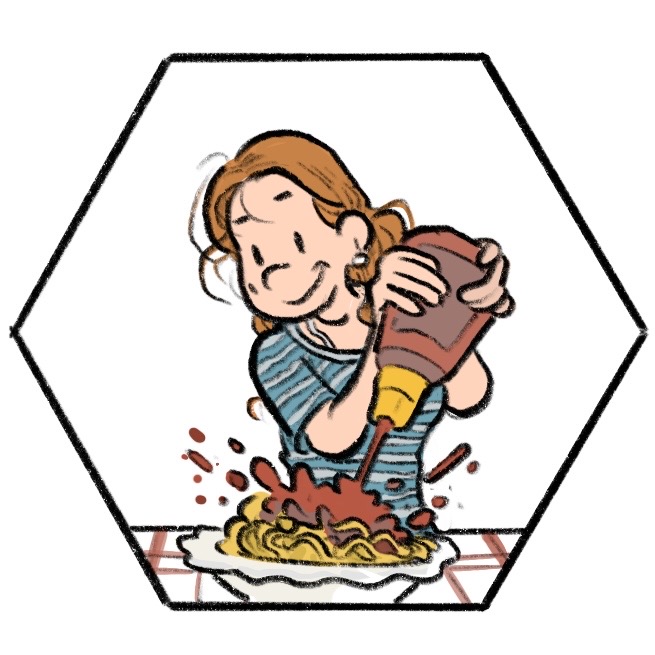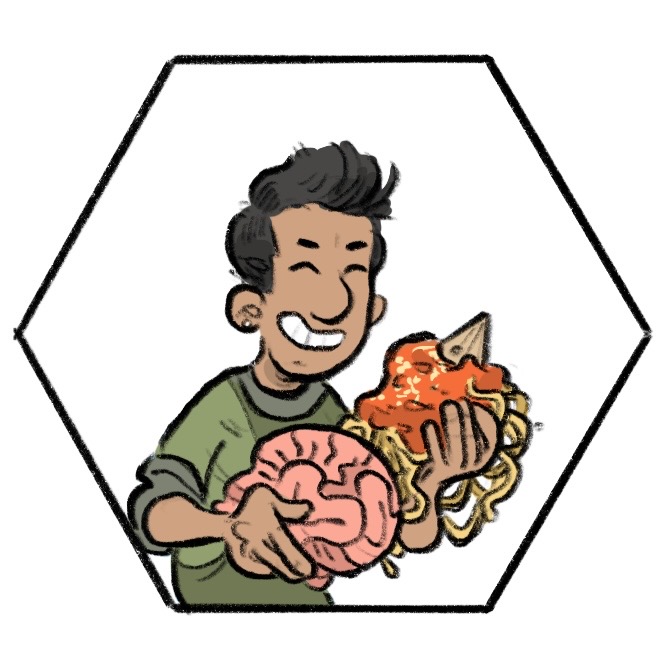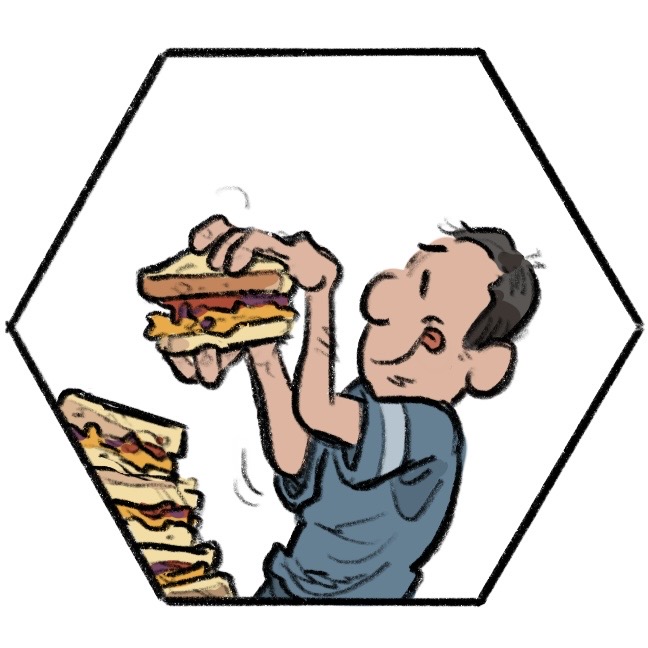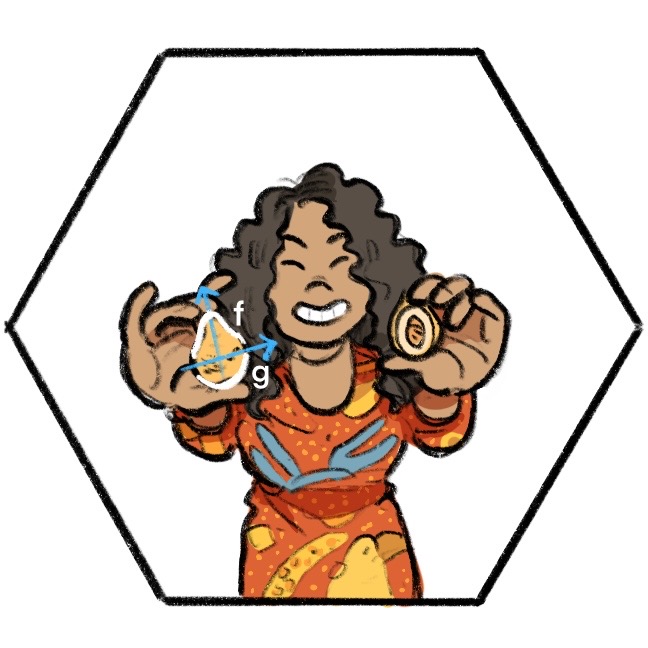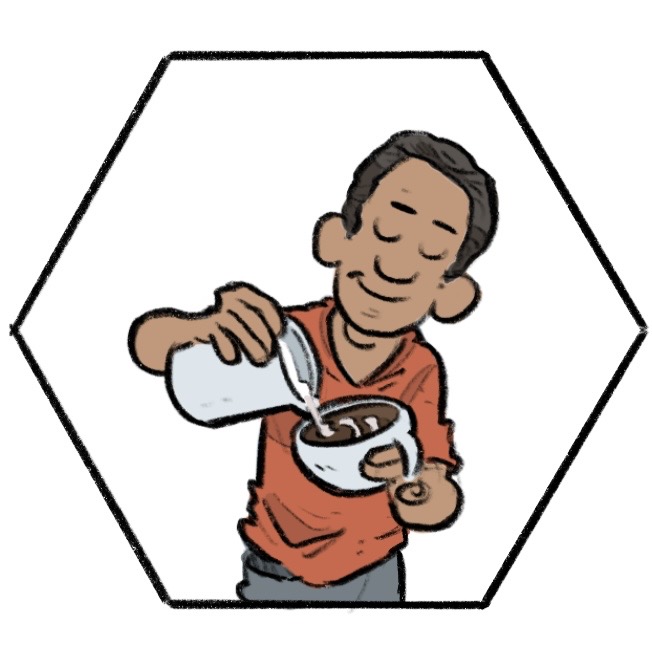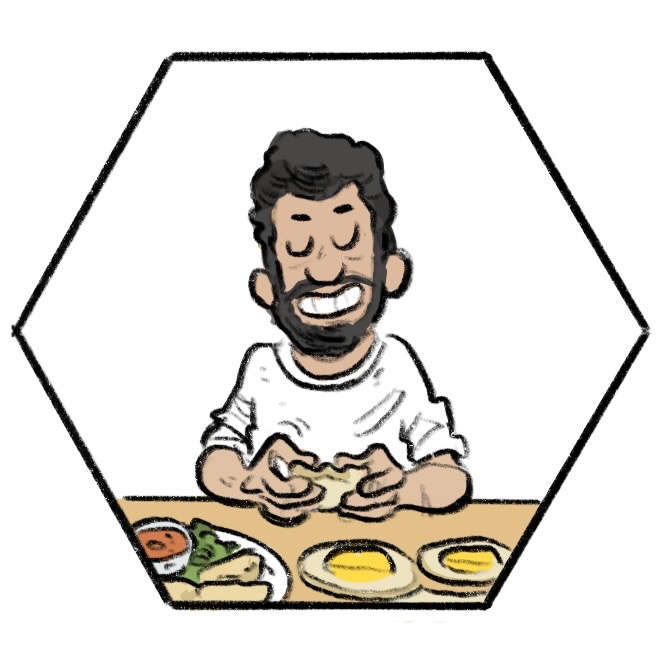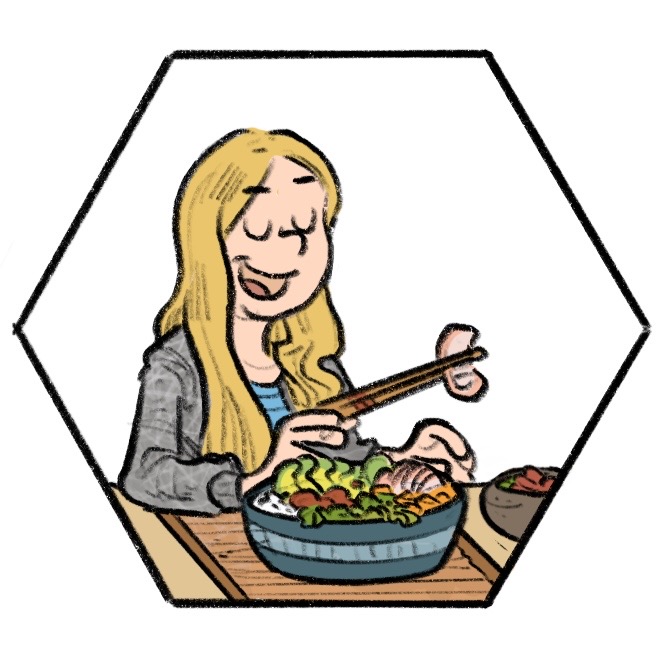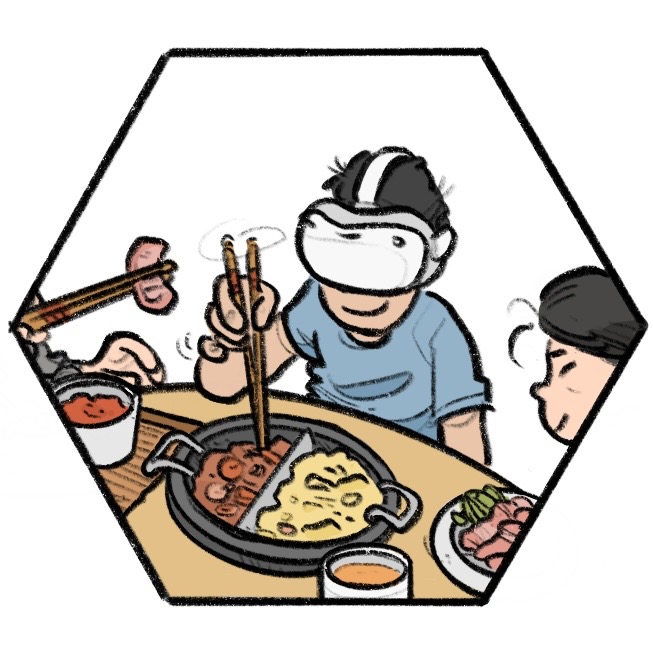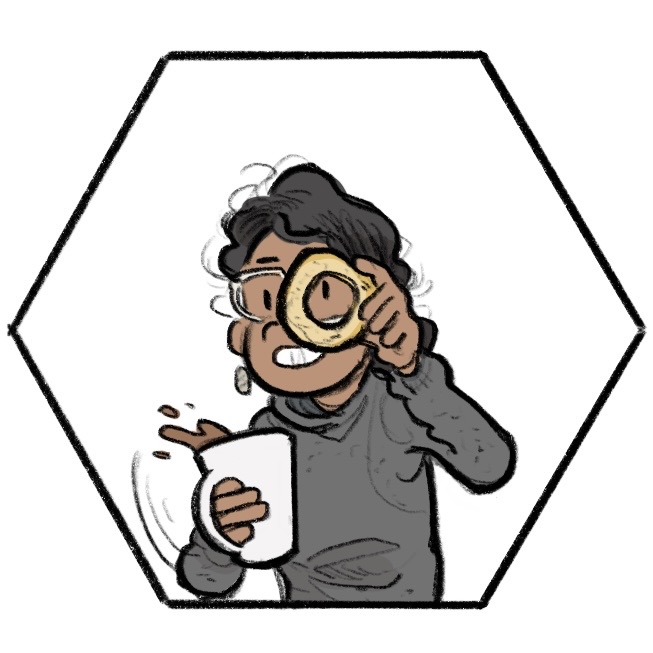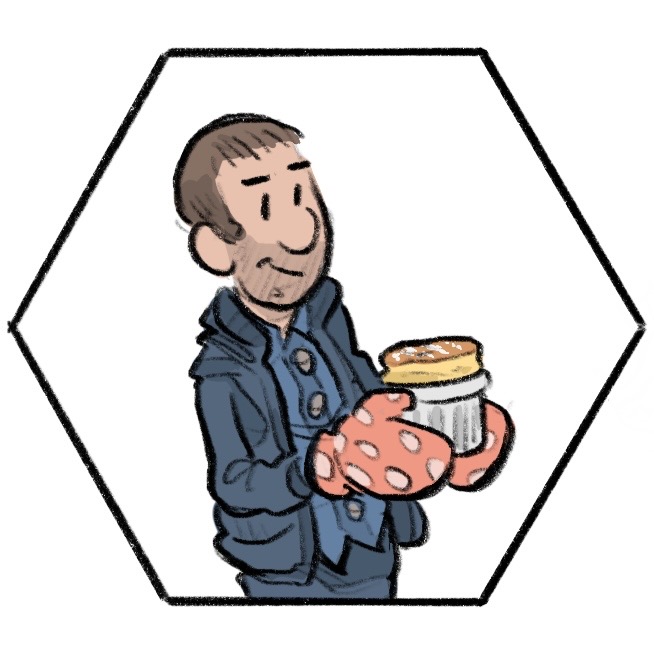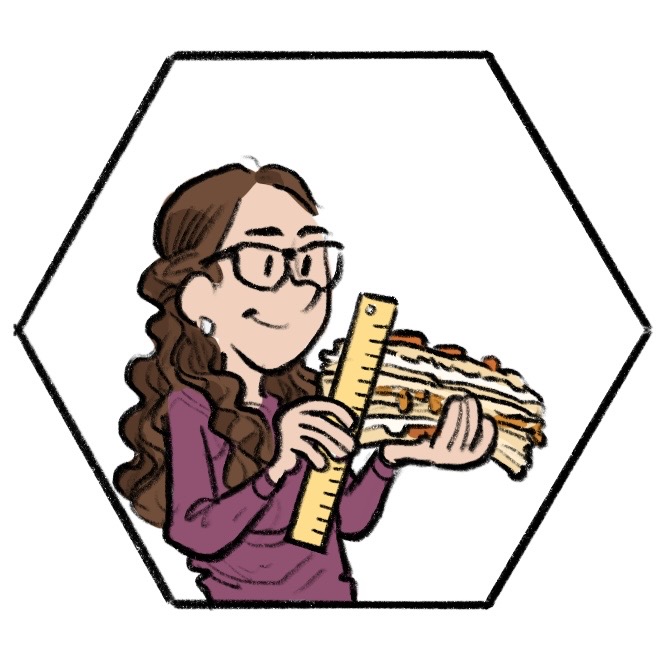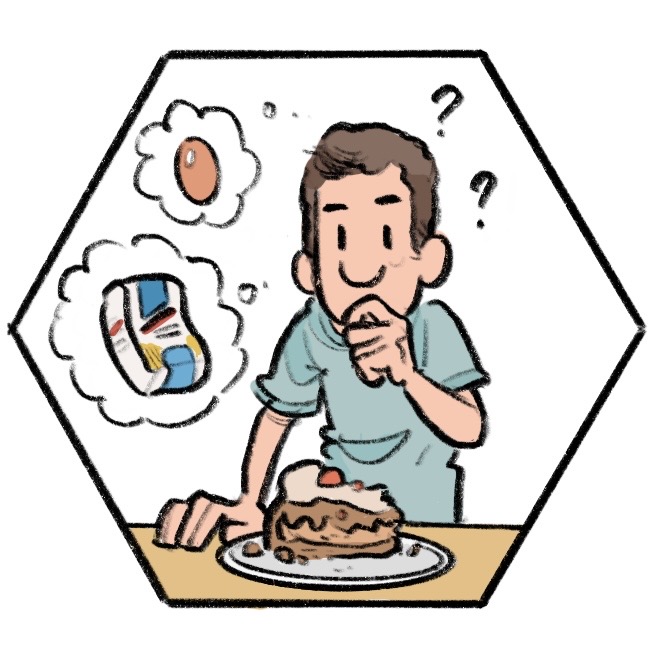What Do Food and Research Have in Common? More Than You Might Think
Nina Beier
A common German saying is that “love goes through the stomach” – but perhaps the same could be said of research?
At the 10th Heidelberg Laureate Forum in 2023, an annual networking conference bringing together some of the brightest minds in mathematics and computer science, we asked twelve researchers:
If you had to choose a meal to describe your research – which one would you choose and why?
Here is what they said:
Jana Brunátová
PhD student in Mathematics at Charles University in Prague & University of Groningen
Research field: Mathematical Modeling
“My research is about modeling how blood flows through vessels in a human brain. I would pick spaghetti with ketchup to describe my research because the vessels are as thin as spaghetti and the blood is a red non-Newtonian fluid just like ketchup (remember how tricky is it to pour the ketchup from the bottle). I am interested in mathematical models that describe such behavior. The reason for studying this topic is to help understand and treat cardiovascular diseases such as brain aneurysms.”
Thomas Jiralerspong
Master’s student in Computer Science at the University of Montreal
Research field: Latent Disentanglement and Reinforcement Learning
“I’d say spaghetti ice cream, although I’ve never tried it myself. It’s essentially ice cream designed to resemble spaghetti with tomato sauce and cheese. So this draws inspiration from spaghetti to build ice cream. Similarly, in my research, I take inspiration from the human brain to build AI models. Also, I think, spaghetti kind of looks like a brain.”
Mark Colley
PhD student and Research Associate in Computer Science at Ulm University
Research field: Human-Computer Interaction
“I’d pick peanut butter and jelly as my meal to symbolize my field of Human-Computer Interaction. I don’t individually enjoy peanut butter or jelly, but combined they create something wonderful. Similarly, in my field, computers and humans, while capable on their own, achieve greater results together. Additionally, the white bread, which is fluffy just like an airbag, connects with my work involving vehicles.”
Pêdra Andrade
Postdoc in Mathematics at Instituto Superior Técnico, Universidade de Lisboa
Research field: Partial Differential Equations (PDE) in Mathematics
“My research concerns the study of regularity theory for Partial Differential Equations (PDEs). A great example to illustrate regularity properties is a very popular Brazilian snack called “Coxinha” which you can find especially at children’s birthday parties and cafeterias in Brazil.
This is why:
In regularity theory, the ideal scenario is when the solution of an equation is smooth – in other words, it is a continuous function without sharp corners and jumps. For example, sine and cosine are smooth functions. By cutting the coxinha horizontally into two pieces, we can obtain two smooth functions. (Please note: Whether we can find smooth functions depends on the shape of the coxinha – a coxinha with a spiky top would not allow that, for example).
Additionally, when looking at the regions formed by the coxinha filling and the dough, we encounter what’s known as a Transmission Problem. This means there’s an interface where the solutions of the equations suddenly change. The main goal here is to understand how these solutions act at the boundary between the coxinha filling and the dough.
Another interesting problem appears when we deep fry the coxinha in oil. In this case, we obtain two heat equations with different diffusion coefficients (meaning that heat spreads differently): one inside of the coxinha and the other on its surface. This effect characterizes what is called a Free Boundary Problem, where we do not know what happens at the interface created by these equations.”
Theo McKenzie
Postdoc in Mathematics at Stanford University
Research field: Probability Theory / Mathematical Physics
“As I study randomness and chaos, I think about mixing two things like coffee with milk. You have two separate things which interact with each other randomly, until they find some kind of equilibrium state – i.e., when coffee and milk are equally mixed and stirring doesn’t help anymore. My research focuses on the question: How long does it take to get to an equilibrium? In the coffee example, this would mean: How many stirs of your spoon does it take to get there, considering factors like cup size and ingredient quantities?”
Thiago Holleben
PhD student in Mathematics at Dalhousie University
Research field: Combinatorial Commutative Algebra
“There is this Brazilian food called pastel – you have a specific dough and you have some sort of flavour like cheese or meat inside. Let’s imagine you are hosting a party and you want to make one pastel for each person. The question I am dealing with in my research is: If you have a fixed number of pastéis of one flavour, for example ten pastéis of cheese (pastéis de queijo) – in how many ways can you distribute them among your guests? However, there are some restrictions. For example, in some cases, only one person from a group of friends can have a pastel of that particular flavor because you don’t want too many of the same kind on one table. These kinds of problems appear in combinatorics and algebra.”
Silvia Sellán
PhD student in Computer Science at the University of Toronto
Research field: Computer Graphics and Geometry Processing
“My research (in Computer Graphics and Geometry) is like a poké bowl. If you’re the kind of person (like me) that quickly gets bored of a single flavour, a poké bowl is great because you can have a little bit of salmon, followed by edamame, corn, rice, avocado, onion, etc. This is what I love about poké bowls and also about my research: there’s a bit of math followed by some programming, as well as art and creative writing. In both, you can mix it up and eat it all at once, or take it one at a time, depending on how you’re feeling that day.”
“I would choose Chinese Hot Pot to describe one aspect of my research because it embodies the idea of a shared collaborative environment. In a hot pot setting, people gather around a table with a central pot of boiling broth and various raw ingredients. It’s like a shared virtual 3D environment where you encourage conversation and collaboration by sharing resources. I work on designing innovative tools to manage this space effectively, just as you have chopsticks and special spoons for the hot pot. This includes developing ways to efficiently select and manipulate objects in cluttered environments, such as working on 3D models, and ways to foster coordination and collaboration, such as in hybrid meetings. It’s about facilitating seamless interactions in a complex shared space.”
Ishika Ghosh
PhD student in Mathematics at Michigan State University
Research field: Computational Topology
“For me, the food would be a donut and a cup of coffee, because I do computational topology. Topology is the study of shapes and to us, a coffee cup and donut are the same thing.”
Michal Jex
Assistant Professor in Mathematics at Czech Technical University in Prague
Research field: Quantum Mechanics, Operator Theory
“I’d compare my research to a soufflé. I focus on weakly bounded states in quantum mechanics, which are states that are stable but at the same time can be easily disturbed. This mirrors a soufflé’s delicate nature – it’s wonderful when handled gently but can quickly deflate if mishandled.”
Victoria Kaial
Master’s student in Mathematics at Universidad Nacional de Rosario
Research field: Combinatorial Optimization and Structural Graph Theory
The following text describes the research she did during an internship at the Laboratory of Informatics, Modelling and Optimization of the Systems (LIMOS).
“If my research topic was a meal, it would probably be a so-called “pionono”: a salty and delicious pile of layers of thin sponge cake and different ingredients (like roasted bell pepper, beet [or beet paste], ham, sliced cheese, lettuce, olives, boiled [and afterwards grated or sliced] eggs, etc.) intercalated. Mayonnaise is present in every layer and covers the outside (at least the top).
I study graph classes that arise from an application: the Routing and Spectrum Assignment Problem (RSA), where the goal is to assign a path and a channel to each demand over an optical fiber network. The optical spectrum is divided into narrow frequency slots and a channel is basically an interval of slots. Some data demands need wider channels than others. For example, text is lighter than video, just like lettuce leaves are thinner than bell peppers.
One of the conditions that the channel assignment must satisfy is “slots continuity”, which means that the channel assigned to each demand is fixed along the whole path, i.e. you cannot change the channel through which certain data travels. The same happens in the pionono: Once one has chosen a position for the cheese layer for example, it cannot be changed in the middle of the path from one extreme to the other of the pionono. We want all our guests to have the same experience when eating it.
Choosing the order of the layers in the pionono feels like a rigorous optimization problem. In particular, like the spectrum (channel) assignment part of the RSA.”
Sascha Gaudlitz
PhD student in Mathematics at Humboldt-Universität zu Berlin
Research field: Statistical Inference for Stochastic Partial Differential Equations
“Imagine having this delicious cake, but your friend won’t share the recipe – it’s their secret. However, it’s so delightful that you want to uncover how it’s made. In this analogy, the cake represents real-world data, like microscope images of cells, and the recipe is a mathematical model we use to understand and describe the data. Essentially, we’re trying to reverse engineer the recipe from the cake, which is like reconstructing the model from the data.”
How would you describe your research with a meal? Let us know in the comments below or tweet it @HLForum with the hashtag #WhatsCookingHLF.
Illustrations by Sina Loriani:
Sina Loriani is a German climate researcher and illustrator (https://sciconaut.de/). In his current science journalism fellowship at the MIP.labor he is working on a comic project to communicate the math and physics behind climate tipping points.
The post What Do Food and Research Have in Common? More Than You Might Think originally appeared on the HLFF SciLogs blog.
